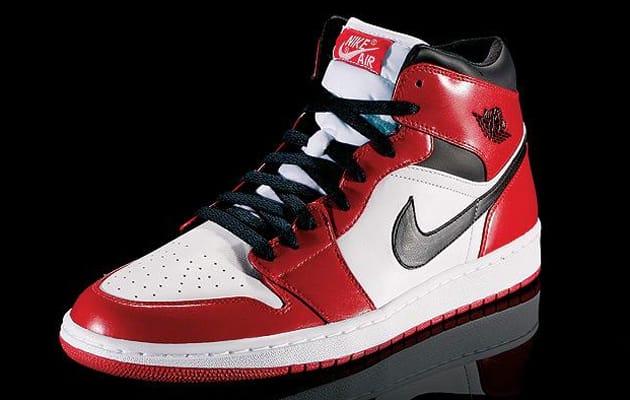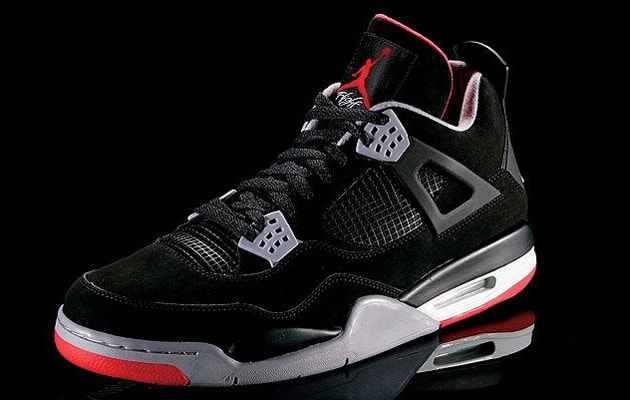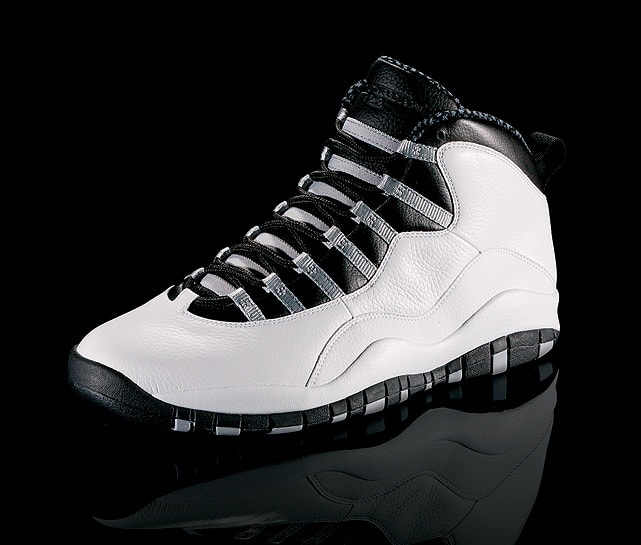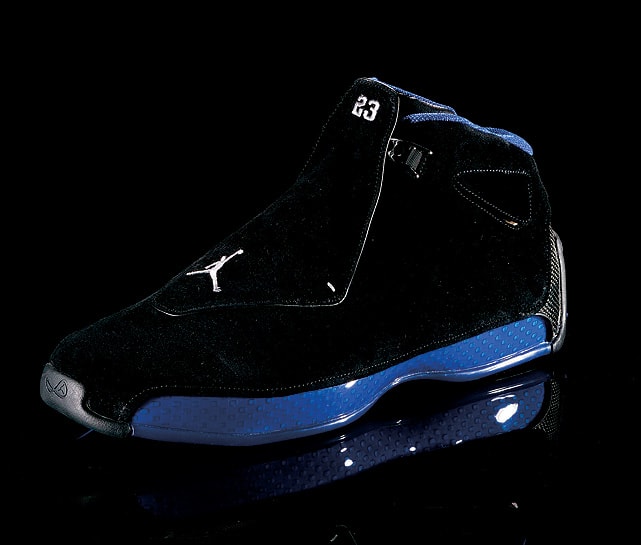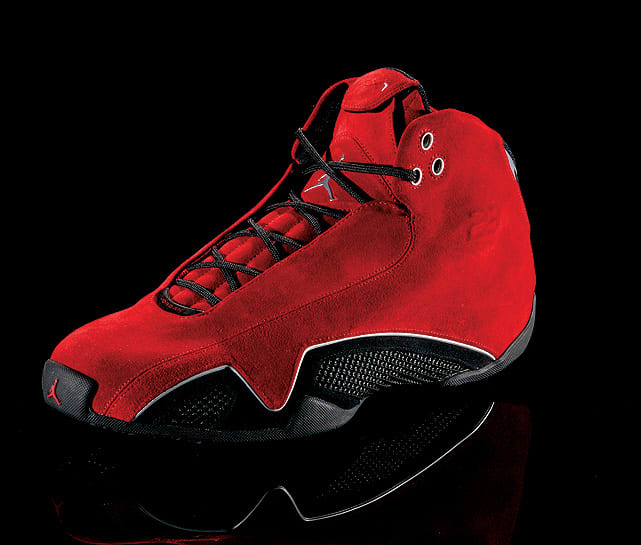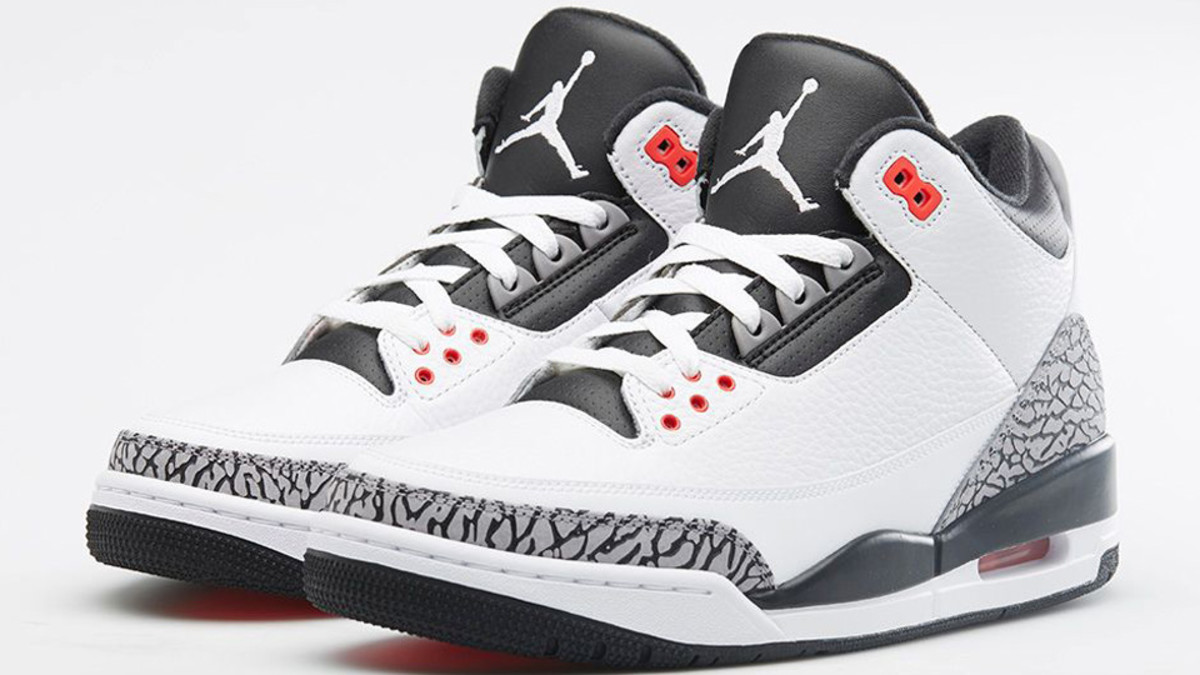
Hard to top: Biggest tech and design innovations in Air Jordan history
Thirty shoes. Thirty designs. Thirty evolutions. As the Air Jordan line unveils its 30th iteration, the AJXXX, we look back at history to pick out the high points of technology and design that has shaped 30-plus years of Jordan shoes. Let’s fly!
Air Jordan I: The shoe debuted in 1985, with Peter Moore designing the original Michael Jordan logo, wings surrounding a basketball, a fashion-forward design in its own right. Sure, the AJI had air in the heel, but the major shift it brought us was the black and red colorway that served as the catalyst for bringing color to the hardwood.
• MORE NBA: OKC plays in shadows of titans | DeRozan dominates in lane
Designed by Bruce Kilgore, this expanded on the first offering, bringing us Nike’s first basketball shoe sans a Swoosh. The design also introduced faux lizard skin and the tech included full-foot air.
Air Jordan III: This is where it all changed for the Air Jordan line. With MJ reportedly still unsure of his shoe deal and sneaker future, Nike brought in Tinker Hatfield to give him something new. And was it ever new. The III gave us the famed Jumpman logo for the first time and mixed tumbled leather with a faux elephant skin print, now the most famous pattern in all of athletic shoe history. The mid-top had a visible air unit, adding so many new features to the 1988 release that, along with MJ’s Slam Dunk win and hoop success, it solidified the AJIII and Air Jordan line as the pinnacle basketball line of all-time.
Hatfield kept going with the line, adding the word “Flight” below the Jumpman logo and introducing mesh and nubuck leather to a basketball shoe for the first time. While the shoe possessed a similar cut to the III, a few design details, such as the hard plastic lace holder, gave the IV its own design motif.
AJ V: This wraps up possibly the most impactful three-sneaker run in signature shoe history. With inspiration derived from a World War II plane, we get distinct patterns and an asymmetrical collar. The translucent outsole also comes to hoops for the first time.
Air Jordans Through The Years
Air Jordan I
Air Jordan II
Air Jordan III
Air Jordan IV
Air Jordan V
Air Jordan VI
Air Jordan VII
Air Jordan VIII
Air Jordan IX
Air Jordan X
Air Jordan XI
Air Jordan XII
Air Jordan XIII
Air Jordan XIV
Air Jordan XV
Air Jordan XVI
Air Jordan XVII
Air Jordan XVIII
Air Jordan XIX
Air Jordan XX
Air Jordan XX1
Air Jordan XX2
Air Jordan XX3
Jordan 2009
Air Jordan 2010
Air Jordan 2011
Air Jordan 2012
Air Jordan XX8
Air Jordan XX9
Air Jordan VI: With the Air Jordan line now solidified as the zenith of sneakers, the innovation was on. The VI brought together leather and suede, the VII introduced the bootie system and used Bugs Bunny in its marketing (a nod to the future and a strategy that would play well in the retro lines), the VIII offered us a lockdown strap, and the IV, released during MJ’s first retirement, was worn as a baseball cleat.
AJ X: This served as the return shoe for MJ, but the next major evolution in the AJ line came with later.
AJ XI: Sure, we saw a return to a clear outsole, got introduced to carbon fiber in a support shank (quite the tech-forward move for 1996), and had the enjoyment of the XI as the Space Jam sneaker. But the true allure of the XI? Patent leather. The patent leather across the toe and wrapping around the sidewall gave the Jordan line a look never before seen, on or off the court.
• MORE NBA: Chinese New Year from adidas | Kings new arena floor
retired for the second time.
AJ XVI: With Wilson Smith III now leading design, the full-length inner bootie was introduced, more patent leather was added, and a full-grain leather came into play. And before you blame the XX8 for all things shroud, it was Smith’s XVI that introduced a removable shroud to the AJ line for the first time.
AJ XVII: MJ's attire as a member of the Wizards kept up with the removable theme and offered up a pull-out lace cover.
After wrongful felony conviction, NBA hopeful gets assist on fulfilling dream
AJ XIX: The next major move came from Tate Kuerbis, with a Velcro heel strap and a new lightweight material for the upper.
AJ XX: This marked the return of Hatfield and ushered in an independent podular suspension cushioning system. The XXI had a diamond-quilted bootie, the XX2 a titanium-coated shank plate and the XX3 subtle nods to MJ throughout, including Michael’s thumbprint inside the tongue so wearers felt they had a connection to His Airness every time they slipped on the sneaker. The outsole was also modeled after his thumbprint.
AJ 2010: This was really 25, but the line switched to naming the shoes after the year for a few shoes. It gave us a clear window on the side of the shoe.
AJ 2011: The 26 was all about personalization, with the leather created so that if hand-buffed it could change color. Plus, the shoe came with two different cushioning systems in the form of two contrasting insoles.
This iteration went with Flight Plate technology that combined Zoom Air and carbon fiber to limit the need for bulky foam. On the outside, a full-length zippered shroud made from material from Switzerland could be fully undone or tightened up, based on the wearer’s desire.
AJ XX9: Here, Jordan introduced Flightweave, a special one-piece woven material from Italy designed for lightweight strength that served as the precursor to Nike’s Flyweave, now found in the Kevin Durant line. The tougher-than-knit weave allowed the engineering of strength while getting creative with the design.
After 29 shoes that gave us everything from faux elephant prints, multiple air technologies, Kevlar, carbon fiber, titanium, shrouds, lace covers, straps, Flightweave, and a sneaker history that transcends the industry, the Air Jordan line took 2015 off as it readied the AJXXX in 2016. Here we go again.
Tim Newcomb covers stadiums, sneakers and technology for Sports Illustrated. Follow him on Twitter at @tdnewcomb.






























